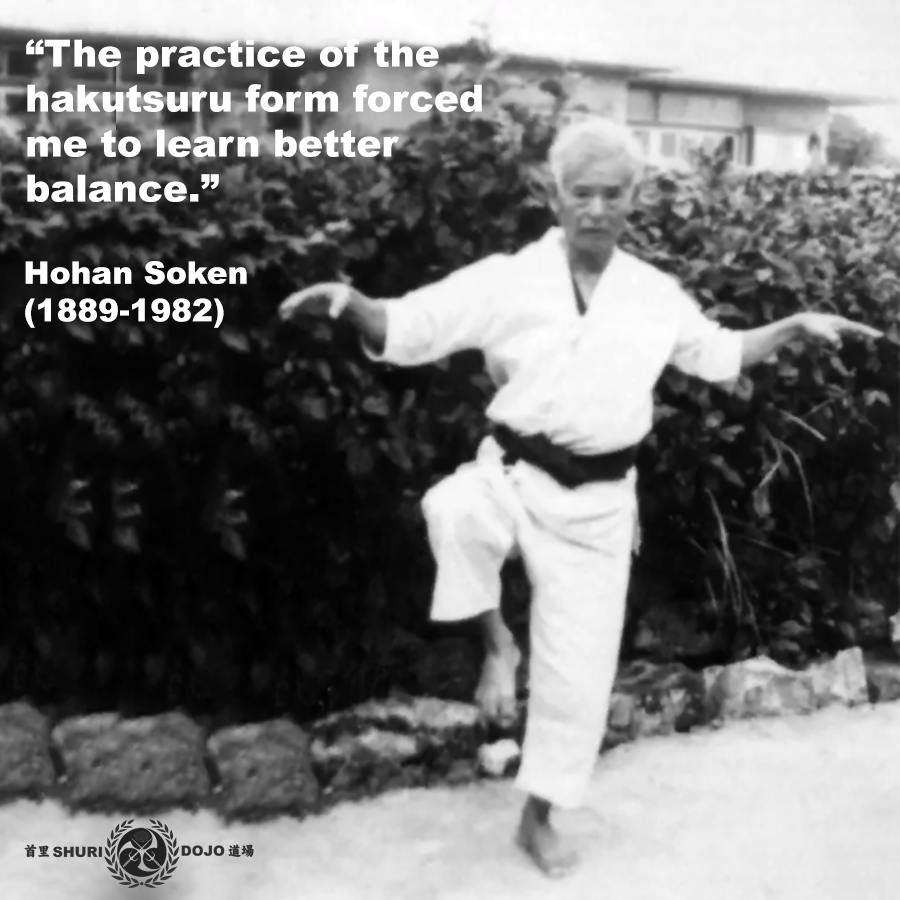
“The crane’s beak is long and pointed, a stabbing weapon useful for self-defense. She is calm and poised, balanced and disciplined. When attacked, she knows she cannot meet force with force. She therefore controls the fight by yielding, until an opening appears, then counters immediately.” Fred Absher – Kojosho Kempo
.
.
The White Crane Style is a Southern Chinese martial art that originated in Fujian province. According to oral tradition, the style was developed by Fang Qiniang, a female martial artist. It is associated with traditional fighting techniques but is most similar to close-quarter combat. It is most recognizable by the way the fighter imitates a bird’s pecking or flapping wings.
.
The white crane or “Hakutsuru” style as it is called in Japanese, came to Okinawa and was blended with Okinawan karate. Oral traditions of Okinawa indicate Chinese immigrants brought the style to Kumermura, a suburb of Naha, Okinawa, as early as the 1600’s and taught it to the native Okinawans.
.
Calm, balanced and disciplined, what better attributes could you want in a fighter? The crane is a master of angles. She has learned to wait until the last second and then by making a slight movement or shifting of the body, the stronger and more aggressive attacker simply throws himself off-balance.
.
Learning to redirect a superior force with minimum energy, as well as optimizing effectiveness of its strikes based upon proper angles and points of attack, is the key strategy of the crane stylists. She knows that the best defense is; “don’t be there,” and has developed that strategy into a fine science.
.
The key to the crane’s ability is being calm and relaxed so as to move quickly and respond. Being relaxed and knowing how to respond and use angles and timing to set up an opening or position of advantage.
.
The Okinawan karate masters of old knew this only too well. Shoshin Nagamine wrote in his book; Tales of Okinawa’s Great Masters: “… Seek to understand the value of angular movement. Never face an opponent directly, and learn body change through mastering foot movement.”
.
Each of us must learn to create balance. Most classical martial arts spend time working on “kuzushi”, or breaking your opponent’s balance. By understanding body mechanics, understanding how the human body was naturally designed to move, and moving in a way that keeps it stable and balanced, we can utilize its natural strengths to generate power…… Be like the Crane. ![]()
![]()
.
“The practice of the hakutsuru form forced me to learn better balance.” – Hohan Soken (1889-1982)
.
References: Terry Bryan Fighting Arts: George Alexander
.
